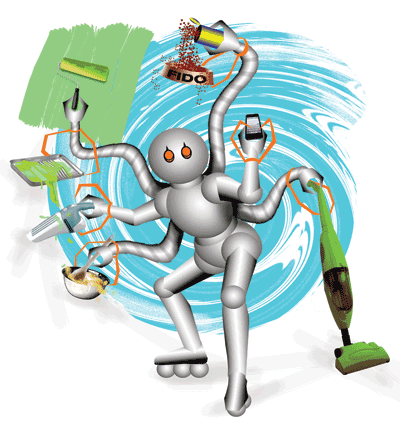Life’s coming attractions
Most of us remember Marty McFly from the Back to the Future trilogy, right? Then you likely recall the scene in the second movie where Marty uses his skateboarding skills to escape the bad guys on his hoverboard. Yup, his hoverboard.
Do you know what year that scene was set? 2015.
So where are the hoverboards, or the Jetsons-style flying cars (which were developed because the earth was too polluted, by the way), or the food pellets that turn to prime rib instantaneously in a super-powered microwave called the Food-A-Rac-A-Cycle?

While movies and cartoons inherently take some poetic license, these types of engineering concepts have clearly existed in our imaginations, and in some cases development, for a very long time.
Yet they have not yet cracked our everyday lives. Why is that?
The 1939 World Fair, for example, unveiled Elektro, a seven-foot-tall, 265-pound robot that could walk by voice command, speak about 700 words, smoke cigarettes, blow up balloons (after smoking all those cigarettes!), and move his head and arms. He returned to the fair in 1940, accompanied by Sparko, a robot dog that could bark, sit, and beg.
Today, there is Tekno the robotic dog, which compared to Sparko, sort of feels like we have gone back to the future.
I know there have been some global advances in robotics, such as in positional sensing for robotic guidance and tactile force-feedback for delicate robotic manipulation.
However I do not know one person who owns Rosie the robot maid — no matter how outdated she was. Maybe it’s because every home doesn’t need a Rosie (my wife would disagree), but maybe other areas of industry do, and are waiting eagerly on engineers to design it.
Put another way, an oft-heard phrase states that “Imagination is everything. It is the preview of life's coming attractions.”
And isn’t that what engineering professionals do? Wonder not only how something works, but more importantly, what could work better and have a positive impact in the future?
So is there an engineer curious enough, inspired enough — motivated enough — to crack the code of necessity of the 21st century? That is my hope, and my challenge, to all our readers.
I look forward to the product advancements that will continue to grace the pages of Electronic Products, and in the meantime, I’ll continue to ponder “life's coming attractions” while I check and see how much longer before my prime rib is ready.
John Filippelli
Managing Editor
And learning to crack the code of 21st century necessity
Advertisement
Learn more about Electronic Products Magazine





